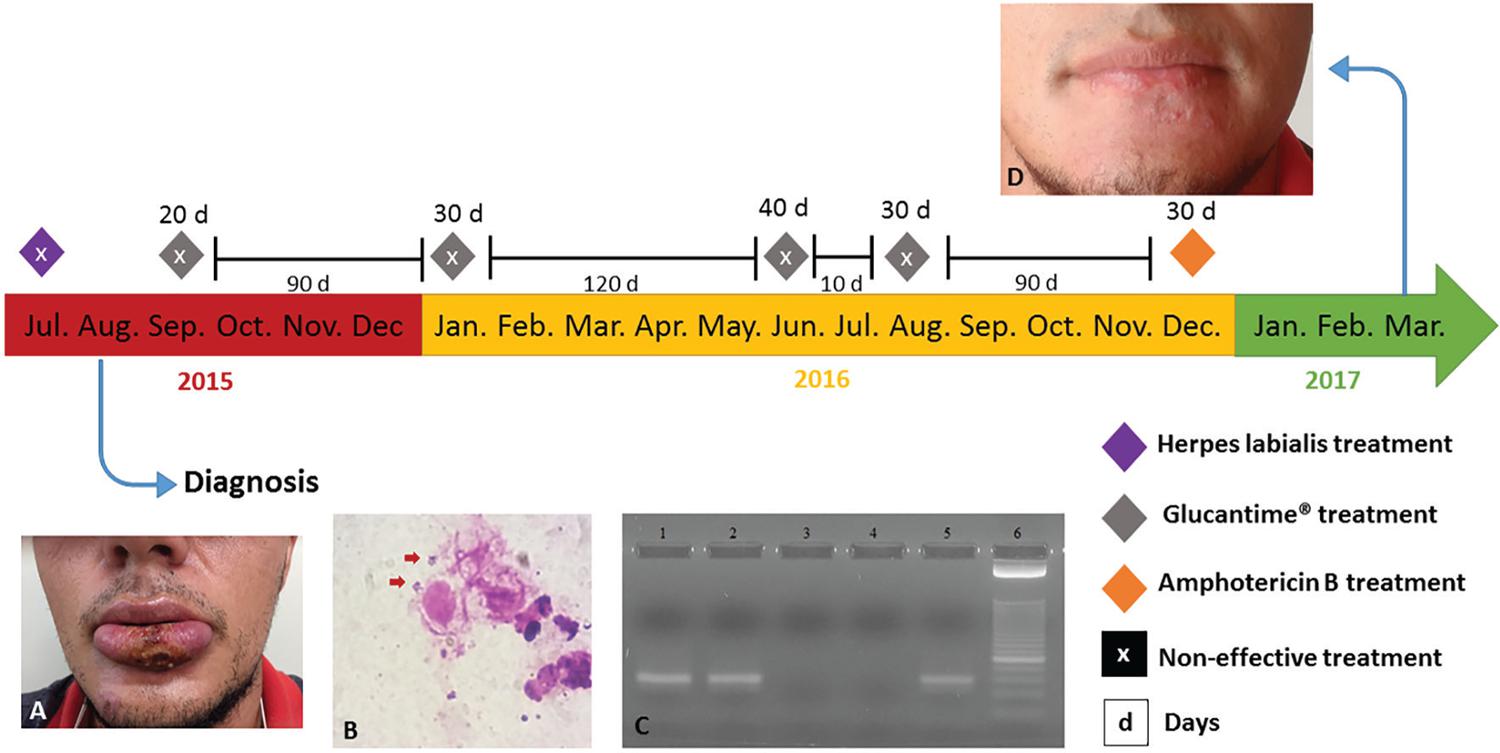ABSTRACT
This clinical case presents a patient with a raised and ulcerative lesion with erythematous edges in the mouth, on the lower lip that was unsuccessfully treated as herpes labialis. Clinical data and laboratory tests (Montenegro skin test, indirect immunofluorescence, direct parasite search and polymerase chain reaction) led to the diagnosis of American tegumentary leishmaniasis caused by Leishmania (Viannia) sp. Treatment with pentavalent antimonial (Glucantime®) for 120 days was not effective and administration of amphotericin B for 30 days resulted in wound healing. Glucantime® treatment protocol was longer than the recommended by the Brazilian Ministry of Health in the handbook of mucosal leishmaniasis. This suggests that amphotericin B should have been administered earlier, preventing the psychological and social problems faced by the patient. This study reports a rare clinical case of primary mucosal leishmaniasis on the lip that had a delayed diagnosis, highlighting the precariousness in the management of disease and showing that, despite the importance of leishmaniasis in Brazil, it is still neglected by health professionals.
Leishmania; Leishmaniasis

